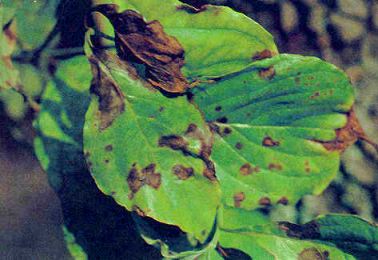Most people are already aware that the state of California is experiencing the worst drought in history, and our savvy followers also may know that this has significant implications on both landscaping practices and the health and vigor of landscapes throughout the state (such as the recently passed AB 2100(link is external)). However, did you know that the drought can actually lead to an increase in fungal infections present in the trees in your landscape? Surprised? Keep reading to discover why!
How the Drought Can Cause Fungus
Most trees are quite hardy and can be resilient to intervals of drought (even if they are not drought-tolerant), but all trees need some water to survive. Trees will seek their own water when none is provided through their extensive root systems, but resources are becoming scarcer than in past years.

Drought stress manifests in trees a few different ways. Direct damage includes drying of leaves, buds, shoots, bark and roots, starting from the tips of the leaves and working inward, and if prolonged for too long, the tree will stop the uptake of water altogether and eventually die. Indirect damage includes slowing or complete shut down of the photosynthesis process, which slows plant growth, as well as the inability of the tree to produce defensive chemicals to protect itself from pests and diseases.
Trees weakened by drought stress are at a greater risk of becoming infected, just as a person with a suppressed immune system is more likely to become sick. The tree’s tissues may be more easily invaded than if the tree were in a healthier condition, the tree may not be able to produce its usual defense mechanisms or put on additional growth in order to fight the infection, and some pests that carry infections may be more attracted to the trees when drought stressed. Some examples are Armillaria root rot, Dutch elm disease, Verticillium wilt, and many different cankers.
Some fungal infections have spread rapidly this year due to the late rains. Here are two fungi common in the Bay Area and the trees they affect: Anthracnose on Dogwood leaves
| Anthracnose | Fireblight |
| Sycamores (Platanus Spp.) | Callery(Pyrus calleryana) |
| Modesto Ash (Fraxinus velutina ‘Glabra’) | Evergreen Pears (Pyrus kawakamii) |
| Dogwood (Cornus Spp.) | Select trees in the Rosaceae family |
| Privet (Ligustrum Spp.) | |
| Chinese Elm (Ulmus parvifolia) |
These fungal infections are worse this year than in past years. Fungal infections thrive in warm and wet conditions, and late season rains were the “perfect storm” to promote fungal development.
Treatment Methods for Fungal Infections
Different treatment methods exist for different infections. Some infections can be treated with well-timed fungicide sprays or injections, others require selective pruning, and unfortunately, some cannot be treated and require tree removal.
If you are concerned about the health of your trees, Certified Arborists would be happy to help diagnose any pests or diseases and provide recommendations to help keep your urban forest as healthy as possible.
See what else you can do to keep your trees healthy(link is external)!
Elizabeth Lanham, Certified Arborist #WE-9234A, Serpico Landscaping (link is external)Tree Care Division